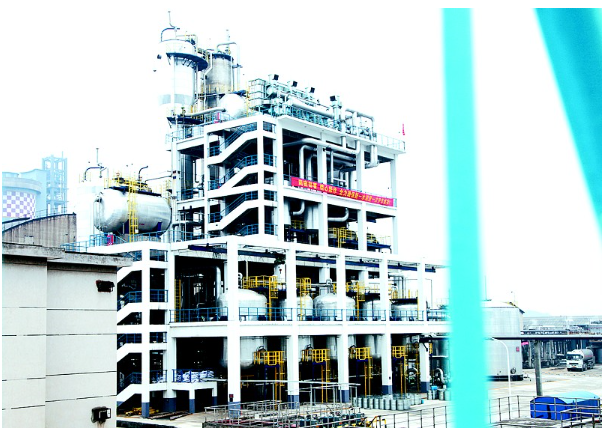Hydrogen Peroxide Plant: Manufacturing Process and Applications
Hydrogen peroxide (H2O2) is a versatile chemical compound that finds numerous applications across various industries. It is widely used as a disinfectant, bleaching agent, and oxidizing agent. In this article, we will explore the manufacturing process of hydrogen peroxide and its applications in different fields.
Manufacturing Process:
The commercial production of hydrogen peroxide involves several steps. The most commonly used method is the anthraquinone process, which can produce high-quality hydrogen peroxide with a concentration of up to 70%. Here is a simplified overview of the manufacturing process:
Hydrogenation: Anthraquinone, a cyclic organic compound, is hydrogenated in the presence of a catalyst, usually palladium. This step converts anthraquinone into anthrahydroquinone.
Oxidation: The anthrahydroquinone is oxidized with air to produce anthraquinone again. This step requires the presence of a suitable catalyst, such as cobalt or manganese.
Hydrogen Peroxide Formation: The anthraquinone is then reacted with hydrogen peroxide in the presence of a solvent. This reaction forms hydrogen peroxide and regenerates the anthrahydroquinone, allowing it to be reused in the process.
Purification: The resulting mixture is purified through various techniques such as distillation, filtration, and ion exchange to remove impurities and achieve the desired concentration of hydrogen peroxide.
Applications:
Hydrogen peroxide has a wide range of applications due to its strong oxidizing and bleaching properties. Some of the common applications include:
Disinfectant and Sterilizer: Hydrogen peroxide is widely used as a disinfectant in healthcare facilities, laboratories, and household settings. It can effectively kill bacteria, viruses, and fungi without leaving harmful residues.
Bleaching Agent: It is commonly used as a bleaching agent in industries such as textiles, paper, and pulp. Hydrogen peroxide can remove stains, whiten fabrics, and brighten paper products without the harmful effects of chlorine-based bleaching agents.
Environmental Applications: Hydrogen peroxide used in wastewater treatment plants to remove organic and inorganic impurities. It can effectively break down pollutants and reduce the environmental impact of industrial effluents.
Chemical Synthesis: It serves as a key component in the synthesis of various chemicals, including peracetic acid, propylene oxide, and sodium percarbonate. These chemicals find applications in the production of pharmaceuticals, detergents, and personal care products.
Rocket Propellant: Hydrogen peroxide, when combined with a suitable catalyst, can be used as a monopropellant for rocket engines. It decomposes rapidly, releasing oxygen and water vapor, providing thrust for propulsion systems.
Horticulture and Agriculture: Hydrogen peroxide is used in hydroponic systems and as an oxygen source for plant roots. It can help prevent root rot and promote healthier plant growth.
Conclusion:
Hydrogen peroxide plant is a valuable chemical compound with a wide range of applications. Its manufacturing process, primarily based on the anthraquinone process, ensures high-quality production. From disinfection and bleaching to chemical synthesis and environmental applications, hydrogen peroxide continues to play a crucial role in various industries. As research and technology progress, new applications and uses for hydrogen peroxide are likely to emerge, further expanding its significance in different fields.



评论
发表评论